BALTIMORE, MD, June 2, 2025 – At the 73rd Conference on Mass Spectrometry and Allied Topics (ASMS), Bruker Corporation introduced the ‘timsOmni’ system. This new mass spectrometer builds on the timsTOF platform and supports scientific, drug discovery, and clinical research. It also handles quality control for biologics, providing structural insights data on the proteoforms and oligonucleotides. The system uses multimodal eXd trapping with controlled electron energy, ion accumulation, and reaction timing. These features allow for collision-induced unfolding (CIU) and enrich the collection of proteoform CCS data. The timsOmni also supports multiple fragmentation techniques, including electron-based (ECD, EID) and collision-based (CID) fragmentation methods. Researchers and biologics developers have flexible options for dissociation, gaining data that balance speed and sensitivity.
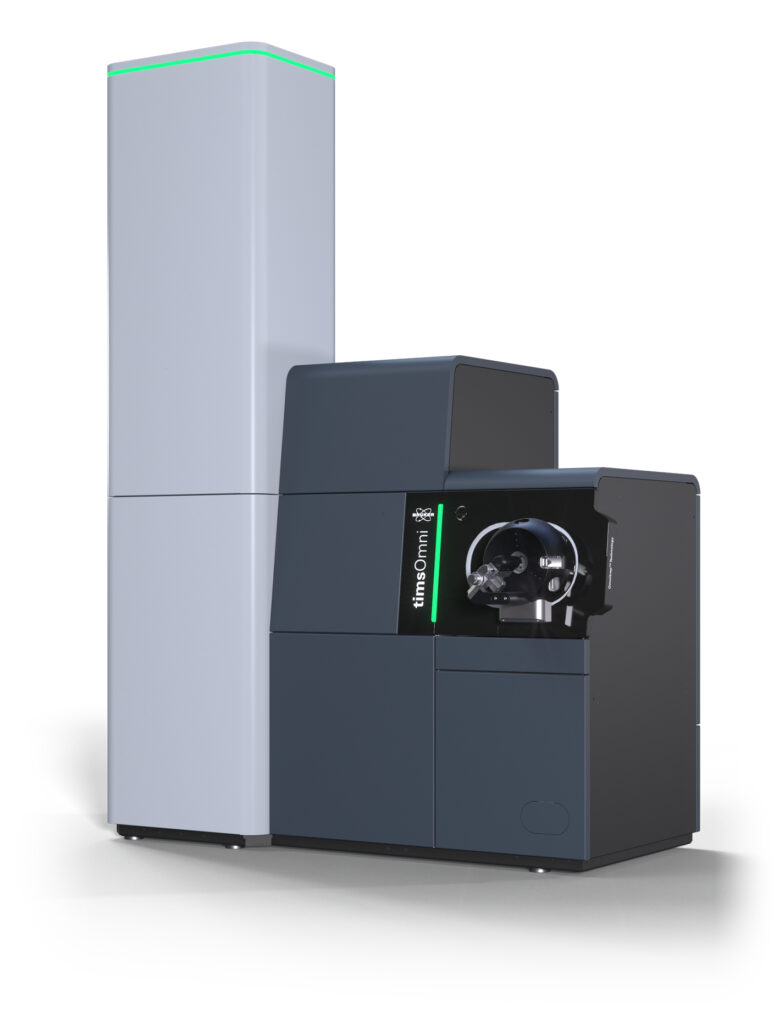
The timsOmni’s top-down analysis capability is designed to detect low-abundance and structurally altered proteoforms – variants arising from alternative splicing, or post-translational modifications that may contribute to disease progression, and, it is seen that these variants are linked to cancer, neurodegeneration, cardiovascular, and autoimmune diseases.
Anders Giessing, PhD, science manager at Novonesis in Denmark, said, “We use intact protein mass analysis to ensure performance, stability, and consistency of our diverse protein product portfolio. Introduction of the timsOmni, with its Swiss Army knife versatility, redefines intact mass and top-down analysis with the precision, speed, and confidence needed to provide definitive analytical support in the development and production of industrial enzymes.”
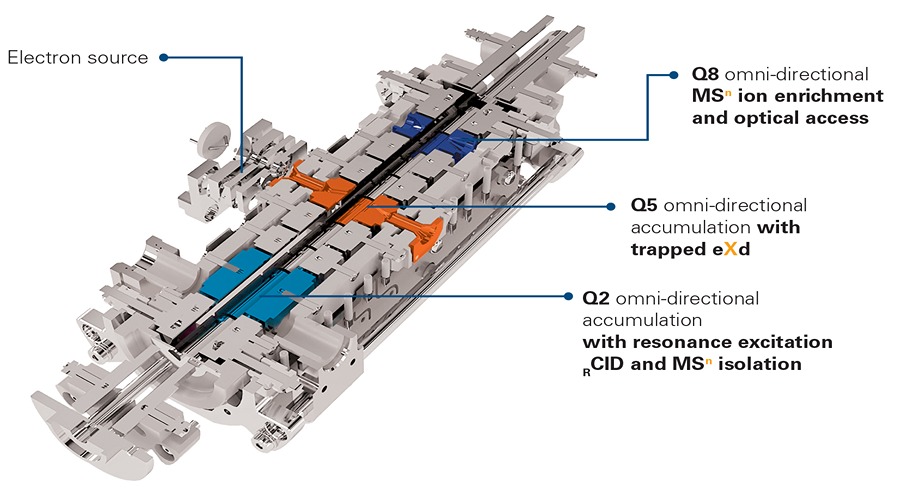
The Omnitrap’s eXd capability combines high sensitivity, speed, and multiple dissociation modes to support analysis of PTMs, such as histone variants (e.g., H3:1K14ac) involved in regulating gene expression by altering chromatin structure and controlling access to the DNA. It also enables characterization of glycosylation, which affects protein folding, stability, transport and cell signaling, and supports top-down or middle-down sequencing of complementarity-determining regions (CDRs) in antibodies relevant to cancer, autoimmune conditions, and biologics research.
Prof. Albert Heck, professor of Chemistry and Pharmaceutical Sciences at Utrecht University and scientific director of the Netherlands Proteomics Center, commented, “Proteomics will finally go ‘protein-centric’ by using the timsOmni. The multimodal eXd capability allows for comprehensive ion sequence ladders that are ideal for de novo sequencing and human plasma antibody repertoire profiling. Analyzing and monitoring circulating antibody levels is critical for characterizing the progression of a disease, identifying patients with delayed symptom onset, and predicting potential long-term immunity.”
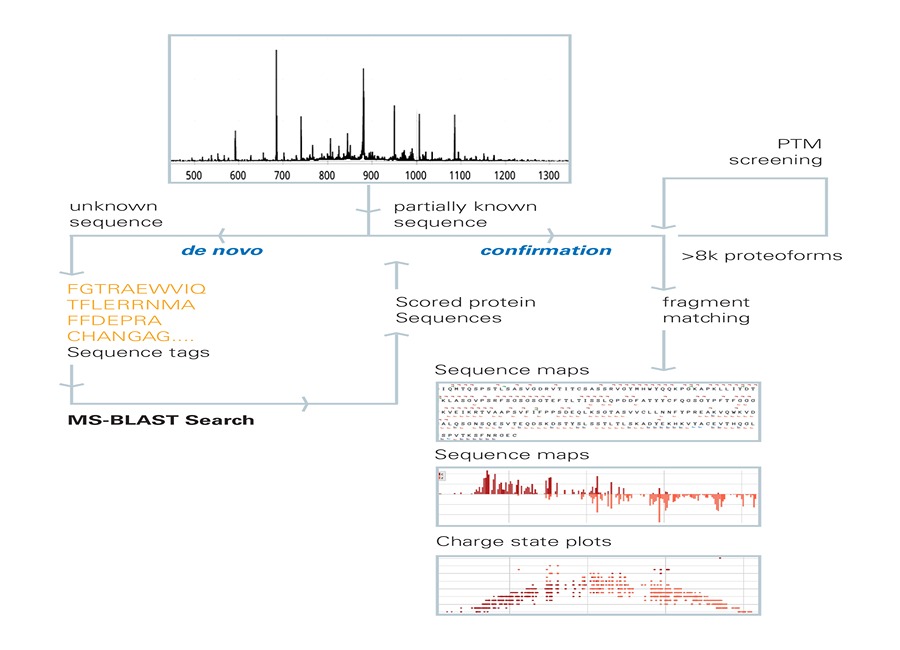
Frank H. Laukien, Ph.D., the CEO of Bruker Corporation, added, “The timsOmni is a new lamppost for functional protein science, shining a light on functional and pathological proteoforms and truly enabling a new protein science paradigm for fundamental cell and molecular biology, signal transduction, cancer, neurodegeneration, and other disease research. The timsOmni will also be extremely valuable for biopharma drug discovery and development, as well as for biologics QC analysis, from therapeutic antibodies to antibody-drug conjugates.”
The timsOmni is integrated with OmniScape, Bruker’s next-gen proteomics software designed for complex spectral analysis. The platform includes tools for de-isotoping, charge state assignment, de novo sequencing support, and sequence confirmation. These capabilities enhance the identification of proteoforms, post-translational modifications, and non-canonical proteins by improving interpretation of eXd fragmentation data. OmniScape supports data processing workflows that align with current demands in functional proteomics.
Prof. Ole N. Jensen, group leader at the Protein Research Group of the University of Southern Denmark, observed, “The timsOmni technology and OmniScape software already impacted our strategies for intact protein and proteoform analysis. Multimodal MS/MS fragmentation and MS3 afford very high amino acid sequence coverage and accurate localization of post-translational modifications in histones.”
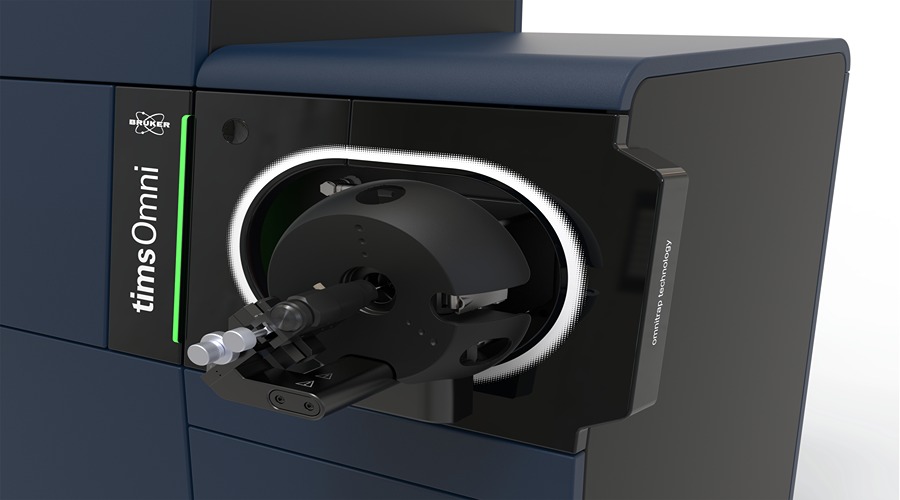
The timsOmni comes with the NEOS off-line nanoESI for the low infusion flow rates required for the study of protein complexes, allowing for extended analysis of scarce samples. The NEOS source works with coated and non-coated emitters. Additionally, the timsOmni retains the high sensitivity of the timsTOF Ultra 2 for nLC dia-PASEF high-throughput bottom-up 4D-proteomics.
The timsOmni is designed to support functional proteomics by enabling in-depth sequencing of ‘Proteoformics’, humoral and multi-specific antibodies, and other complex biomolecules. It facilitates analysis of protein structure and function in detail.
Source: Bruker Corporation
About Bruker Corporation
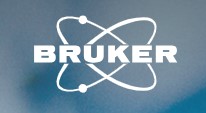
Bruker Corporation, established in 1960 and based in Billerica, MA, develops scientific instruments and analytical systems used across research and industrial applications. Its portfolio includes nuclear magnetic resonance (NMR), mass spectrometry (MS), X-ray diffraction (XRD), electron microscopy, and various spectroscopy tools, supporting disciplines such as structural biology, materials analysis, and molecular diagnostics. The company’s solutions are used in life sciences, pharmaceuticals, materials science, environmental testing, and food safety. Bruker serves academic, government, and commercial laboratories by providing technologies for detailed molecular and cellular characterization, quality control, and imaging. With operations in more than 70 countries and a workforce of over 8,500, Bruker reported around $3 billion in revenue for 2023. The company is expanding its analytical tools to address growing needs in research and process monitoring.
